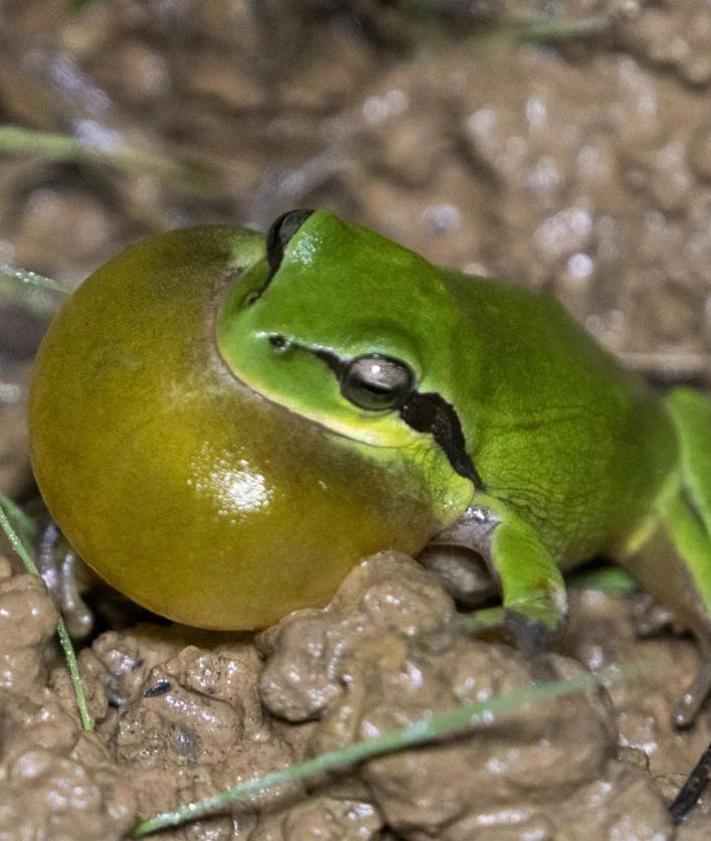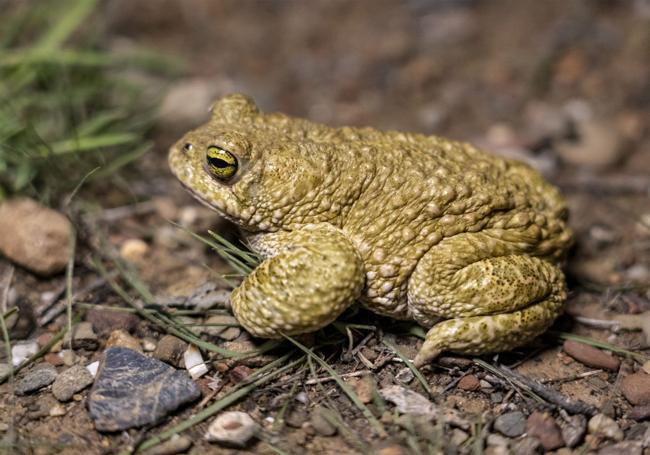Soliva lake: the ecological oasis in Malaga born from a failed clay quarry
The Mediterranean tree frog, the natterjack toad, the little owl and the European bee-eater are just some of the species inhabiting this artificial wetland
Long before the current district of Soliva was built to the west of Teatinos in Malaga city, there was one of many attempts in this area to extract the local clay to make bricks. This particular attempt proved unsuccessful. As with other similar sites created in the surrounding area, so much was drilled here that they broke through the water table and the groundwater came to the surface. This is the backstory of what would become a real ecological oasis located in this urban neighbourhood, the origins of what would come to life years later with the construction of subsidised, social housing.
Over time the abandonment of the clay quarry caused the flooded land to fill up with nature. Water and plant vegetation (tamarisk, reeds, rushes and bulrushes) gave way to the appearance of animal species that have found a suitable habitat at this site, which is also located very close to the westernmost part of the university campus of Teatinos - from there you can see The Green Ray and La Mayora buildings.
Amphibians, reptiles, birds and mammals make up an ecosystem with hundreds of animal species that have been seen either in the lake itself or its immediate surroundings, in an area of around 20,000 square metres. Rabbits, hares and even foxes have been spotted around the wetland.



More important is the section on the birdlife spotted there. Whether a permanent resident or just passing through, members of the local group of the Spanish ornithological society (SEO) have certified the presence of birds of prey such as the buzzard, the lesser kestrel, the little owl, the booted eagle and the short-toed eagle.
Other avian sightings include partridge, blue-breasted nightingale, European bee-eater, black wheatear, spectacled warbler, squacco heron, little grebe, mallard and red-rumped swallow, among many others.

The Soliva wetland has also become a paradise for reptiles and amphibians. Among the former are the common chameleon and four types of snakes (viperine water snake, ladder snake, Montpellier and Iberian false smooth snake), while among the latter, the presence of the natterjack toad, the Mediterranean tree frog, the common toad and the Iberian green frog has been confirmed.
Under threat - again
This artificial lake that was created by accident has seen its water supply increase considerably after the heavy rains in March. A long while back the landowners had even drained this unexpected wetland, but nature can be pretty stubborn sometimes and the lake came back to life, although it never fully disappeared as an oasis for local fauna and flora.

Now, however, there is a great threat to the future of Soliva lake. Paradoxically, the same urban development that favoured it for the manufacture of bricks could be the one that destroys it, as a plan is in place for more building in this area. The plan is to build over 1,000 houses and was finally approved in 2012. In recent years a protest group of local residents and associations has been created to prevent Soliva lake from disappearing and to keep it as an ecological oasis in this part of Malaga city.
To this end, the Almijara association has even proposed integrating the wetland with the green belt being created following the ecological restoration of the former Asperones landfill site. This would also allow this wetland to be connected with other seasonal wetlands in the area.

-ksdF--1200x840@Diario%20Sur.jpg)